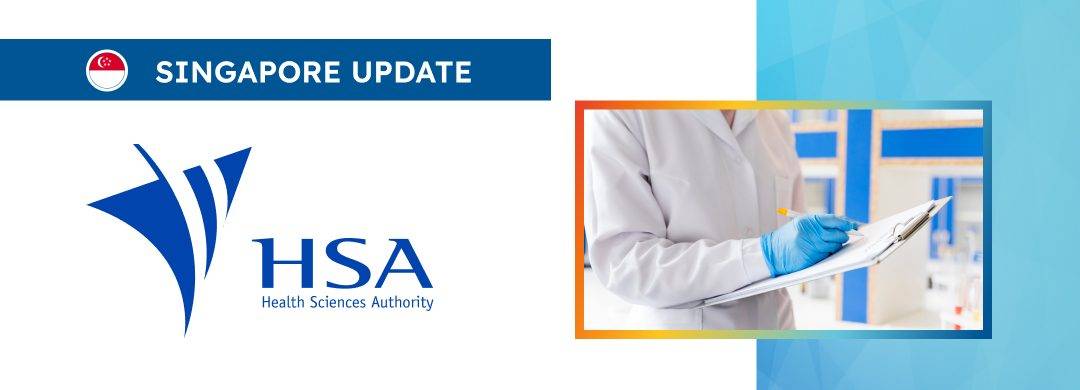The new article addresses the aspects related to the key concepts used in the context of clinical evaluation.

Table of content
The Health Sciences Authority (HSA), Singapore’s regulatory agency in the sphere of healthcare products, has published a draft guidance document dedicated to clinical evaluation of medical devices.
The document is intended to provide an overview of the applicable regulatory requirements, as well as additional clarifications and recommendations to be taken into consideration by medical device manufacturers and other parties involved in order to ensure compliance thereto.
At the same time, provisions of the guidance are non-binding in their legal nature, nor are they intended to introduce new rules or impose new obligations.
he authority also reserves the right to make changes to the guidance and recommendations provided therein, should such changes be reasonably necessary to reflect corresponding amendments to the underlying legislation.
Key Terms and Concepts
In order to assist the parties involved with interpreting the provisions of the applicable legislation and following the requirements set forth therein, the authority provides definitions of the most important terms and concepts used in this respect.
In particular, the guidance document elaborates more on definitions and concepts introduced under the Health Products Act 2007 and the Health Products (Medical Devices) Regulations 2010.
It is also important to note that these definitions described in the guidance are not extracted from the legislation as they are but rather, explained to provide clarity to laypersons and are not suitable for legal interpretation.
An “Adverse Effect” refers to any negative impact that is serious or potentially serious to human health when a medical device is utilized.
This term has a broad scope, encompassing any harmful or toxic effect that could impair human health.
An “Adverse Event” is a broader term that captures any incident that could highlight a fault in a medical device or an adverse effect that results from its usage.
This is a critical term within the regulatory context as it triggers investigations and potential actions to ensure patient safety.
The term “Clinical Data” is central to the regulatory assessment of medical devices.
It encompasses safety and performance information deriving from the actual use of a medical device in clinical settings.
The clinical data could originate from multiple sources, including results from clinical trials before and after the medical device enters the market, scientific literature, and real-world data from various healthcare databases.
“Clinical Evaluation” stands for an analytical process undertaken by product owners to verify the safety and efficacy of a medical device intended to be marketed and used in the country.
According to the guidance, it is a pivotal part of demonstrating compliance with the Essential Principles of Safety and Performance.
The final outcome of this process is a comprehensive report that not only presents the data but also demonstrates compliance with the Essential Principles based on the quality of the data.
As further explained by the authority, “Clinical evidence” is the combination of clinical data and the clinical evaluation report and stands as an integral part of the technical documentation for a medical device.
This documentation is essential for product owners to demonstrate conformity with the Essential Principles and supports claims about the medical device’s safety and performance.
A “Clinical Investigation” (also referred to as a “clinical trial” or “clinical study”), is a systematic investigation involving one or more human subjects, designed to evaluate a medical device’s safety and performance.
Such investigations are not limited to the pre-marketing phase but also extend to post-marketing studies to continually assess the device’s performance in the public domain.
The “Clinical Investigation Plan” provides a structured approach to conducting a clinical investigation. It outlines the reasoning behind the investigation, its goals, the methodology to be used, and the handling of the data collected.
“Clinical Safety” ensures that the use of the medical device, as per the manufacturer’s instructions, does not pose unacceptable risks to patients.
In the context of clinical evaluation, a “Comparable Device” is a medical device selected by the product owner that serves as a reference due to its similar functions, aiding in the evaluation of the device under consideration.
“Conformity Assessment” is the systematic review of evidence and procedures by the product owner, ensuring that the medical device meets the safety and performance requirements as intended, thereby adhering to the Essential Principles it is subject to.
“Intended Purpose/Intended Use” refers to the manufacturer’s stated objective for the medical device, which should be reflected in the product’s specifications and instructions, while “Performance” is the measurement of the device’s ability to fulfil its intended purpose, which encompasses both its clinical utility and technical functionality.
The “Product Owner” is the entity under whose name the health product is supplied, and who is responsible for a range of activities related to the product, including its design, manufacture, and the assignment of its purpose, either directly or indirectly.
“Recognised Standards” are benchmarks that are deemed to meet specific essential principles of safety and performance, providing a presumption of conformity when adhered to.
“Standalone Software”. also known as Software as a Medical Device (SaMD), refers to software intended to function independently without controlling or affecting other hardware medical devices.
“Technical Documentation” is the compendium of documented evidence that a medical device complies with the essential principles.
This documentation is normally an output of the quality management system and is crucial for demonstrating the device’s conformity to regulatory standards.

Predicate Devices Meet or Exceed Expected Safety and Performance
Apart from the technical clearance methods described above, predicate devices should also demonstrate a proven record of safety and effectiveness in their intended environment of use.
- Performance During Use
Devices that continue to perform safely and as intended post-market are ideal candidates for predicate devices.
The FDA recommends choosing a predicate device that has maintained a consistent safety profile and has not been subject to significant adverse events or malfunctions. - Review of Adverse Events and Malfunctions
The FDA suggests reviewing data on medical device-related adverse events, which can be sourced from databases such as the MAUDE, MDR, and MedSun Reports.
This information can reveal insights into the device’s performance and any emergent safety issues not identified during the premarket review. - Consideration of Post-Market Data
Information about the safety and effectiveness of the device placed on the market may evolve once it is in broader use.
New or more frequent adverse events, interactions with other products, or the effects of changes made to the device or its manufacturing process can all inform the suitability of a predicate device. - Database Searches for Safety Data
The authority also recommends conducting searches in the FDA databases for reports of injuries, or malfunctions associated with the potential predicate devices. High incidences of reported issues might indicate intrinsic design or performance problems - Mitigation of Known Issues
If the selected predicate device has known issues, the FDA expects submitters to address in their 510(k) submissions how their new device addresses these issues. It may involve improvements in design, materials, manufacturing processes, or other areas that enhance the safety and effectiveness of the new device.
Conclusion
In summary, the present HSA guidance provides an overview of the most important terms used in the context of clinical evaluation for medical devices. The document explains each of these terms and highlights the key points to be considered in order to ensure their proper interpretation.
How Can RegDesk Help?
RegDesk is a holistic Regulatory Information Management System that provides medical device and pharma companies with regulatory intelligence for over 120 markets worldwide. It can help you prepare and publish global applications, manage standards, run change assessments, and obtain real-time alerts on regulatory changes through a centralized platform. Our clients also have access to our network of over 4000 compliance experts worldwide to obtain verification on critical questions. Global expansion has never been this simple.

